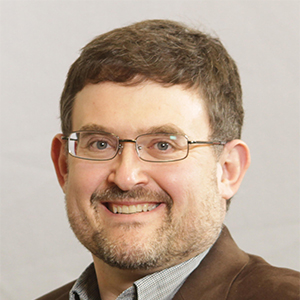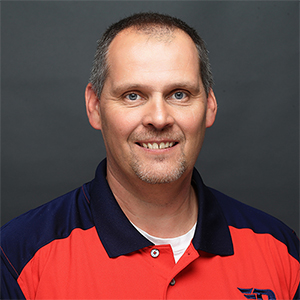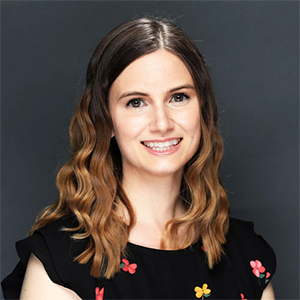Summer Undergraduate Research Experience
S.U.R.E. Projects for 2019

It has been stated that the next industrial revolution will be formed by artificial intelligence (AI). AI is the theory and development of computer systems performing tasks that typically require human intelligence. This technology is playing a unique role in modern industrial systems. Companies are launching products with advanced functions because of the involvement of artificial intelligence factors. AI is utilized in manufacturing to reduce labor costs, decrease product defects, minimize unplanned downtimes, improve transition times and increase productivity (TechEmergence.com, 2018). Advances in AI could potentially help people with vision, hearing, cognitive or mobile disabilities to improve employment opportunities and enhance their quality of life. This research seeks to understand the applications of AI in industrial systems and identify the complex problems in the implementation of AI methods, such as computer vision, pattern recognition and machine learning. The goal of this project is to develop a framework for deploying AI factors in industrial systems.
—Undergraduate Student Researcher: Matt Gnacek

Nanomaterials (NMs) hold tremendous potential to improve quality of life through applications spanning everyday consumer products to biomedical therapeutics. This surge in NM utilization has resulted in significant degrees of NM waste and increased rates of human exposure, generating the need to ensure the safety of NM-based applications. As NM behavior is dependent upon local environmental factors, this creates a challenge for standard cell-based assessment to produce reliable data, as they lack physiological accuracy. This work strives to overcome these limitations by transforming a standard cellular model into one more representative of a human system, thereby developing an environment more representative of real world exposure scenarios. Through utilization of this enhanced model for NM safety assessments, we will be able to accurately characterize NM behavior and resultant bioresponses accurately and efficiently.
The objective of this work is to design, generate, and validate an enhanced microenvironment model (EMM) for biologically accurate evaluation of NM behavior and safety. To accomplish this, we propose to construct and implement the EMM which retains the advantages of cell-based systems, but incorporates the key physiological elements of: 1) a multiple cellular compartment model, 2) dynamic flow connecting all cellular compartments, and 3) inclusion of a circulating immune line. The EMM will be challenged with silver NMs (AgNMs) followed by evaluation of NM behavior, pharmacokinetic profiles, and induced biological responses, including cellular stress, inflammatory responses, and genetic modifications: thereby validating our hypothesis that the EMM displays differential behavior from traditional in vitro systems.
—Undergraduate Student Researchers: Abigail Hanson and Annie Wesner

Biomedical Engineering is an exciting field that involves the use of engineering design principles to solve critical problems in the fields of medicine and biology. This summer undergraduate research opportunity will involve a research project focused on one of the following areas of interest to the student: biosensors, bioinstrumentation and monitoring systems, medical imaging, telemedicine (remote healthcare), and/or electronic communication systems used in preventative or trauma patient care through collaboration with Premier Health Network. Student(s) will have the opportunity to participate in clinical engineering activities onsite at Miami Valley Hospital and other locations within the community. Proof of recent TB test (2-step skin test, or T-Spot blood test) within the last calendar year, and MMR vaccination is required prior to the start of the program.
—Undergraduate Student Researcher: Riley Zelczak

Applying the process architecture map tool and method to healthcare process improvement at a hospital. I have made connections with a hospital in Dayton, and have initial approval for our project to work with them.
This project would continue the work performed by two S.U.R.E grant students in the summer of 2017 and 2018. The research began the development of a reference process architecture to develop process architecture maps for healthcare hospital processes. The process architecture maps enable the streamlined capture of the important elements that are needed to design and improve healthcare processes. We will now be using the process architecture map tool to identify process improvements at a hospital in Dayton.
—Undergraduate Student Researcher: Anmol Jarang

Extracting usable energy from forward flight has remained a velleity for many years in the field of aeronautical engineering. One possible endeavor to extract energy is by designing a wing with an enclosed spanwise axis turbine near the leading edge which converts kinetic energy into rotational energy. The research will involve designing and 3D printing a NACA 0018 wing with a turbine near the leading edge. Parametric study will need to be performed to determine the optimum Normalized turbine location c_T/c where c_T is the turbine location from the leading edge and c is the chord length of the airfoil. Normalized turbine diameter d_t/t where d_t is the diameter of the turbine and t is the thickness of the airfoil. Location of air slot across the upper and lower surface of the wing. Width of the air slot where power output from the turbine can be maximized without sacrificing the aerodynamic efficiency of the wing.
—Undergraduate Student Researcher: Bryan Hoffman

The material of construction for Impeller blades on industrial agitation equipment are typically metal. The most common material is an austenitic stainless steel. There are significant advantages from an energy efficiency standpoint in being able to use lighter materials for this application. Historically, composite materials have been used sparingly because they are very expensive (the process to make these parts is very labor intensive). This investigation will look into the use of commercially available composites that could be used in agitator service. Mechanical performance will be evaluated.
—Undergraduate Student Researcher: Ryan Simkins

Computational simulations of human movement require knowledge of the human body's center of mass. However, center of mass is a quantity that is difficult to measure experimentally. Using new technology developed in UD's DIMLab, we can estimate a person's center of mass accurately. This project will explore the feasibility of combining experimental center of mass estimation methods with simulation based estimates of center of mass. We aim to find a method to validate center of mass estimates applied in simulations and improve simulation accuracy.
—Undergraduate Student Researcher: Colin Theis

Additive manufacturing (AM), also known as 3D printing, is a potentially game-changing manufacturing technology capable of rapidly and inexpensively creating customized part geometries unattainable with conventional manufacturing techniques. Within the AM community, attention has gradually shifted from rapid prototyping to producing load-bearing components, with the latter demanding a sound fundamental understanding of 3D-printed material properties (stiffness, strength, and ductility) and component performance (deformation and failure). Accordingly, this hybrid experimental-computational project focuses on quantifying the mechanical properties and performance of two 3D-printed elastomers, NinjaFlex (printed using fused deposition modeling, FDM) and ELAST-BLK 10 (printed using digital light processing, DLP). Nominally, NinjaFlex is capable of strains greater than 650%, making it appealing for biomedical, automotive, and aerospace applications requiring large elastic deformations and extreme stretchability. ASTM D412 tension test specimens will be fabricated using a Josef Prusa I3 MK3 FDM printer (NinjaFlex) and a 3D systems Figure 4 DLP printer (ELAST-BLK 10), then mechanically tested using an Instron 3365 long-travel load frame. Various hyperelastic material models (e.g., neo Hookean, Mooney-Rivlin, Yeoh, Gent, Ogden, and Arruda-Boyce) will be calibrated to the tensile test data and implemented in the commercial finite-element software Abaqus. User-defined material subroutines (UMATs) will be developed for material models not natively integrated into Abaqus. Finite-element simulations will be conducted on various 3D-printed aerospace and biomedical components to investigate part performance and compare with traditionally manufactured (e.g., injection molded) elastomers.
—Undergraduate Student Researchers: Brad Hripko and Kyle Rudolph
Dispersing gases into liquids is a common agitator operation, with aerobic fermentation being one example. In these applications, the agitator must accomplish multiple objectives. First, gas being injected into the liquid must be broken up into small bubbles to provide significant interfacial area through which gas-phase species such as oxygen can be transferred into the liquid. Additionally, the agitator must effectively blend the liquid phase to distribute dissolved gases, liquid-phase reactants, and nutrients throughout the fermenter. Early gas dispersion impellers were simple flat plates attached to a circular disc. These impellers had performance inadequacies, most notably their significantly different power draws in liquids and in gas-liquid dispersions. Improved performance was achieved by replacing the flat blades with semicircular concave blades and then deeper concave blades. While these second and third generation gas dispersion impellers provide good process performance, they are complicated to manufacture and are subject to increased mechanical stresses that can lead to blades breaking during operation. A recent development in gas dispersion impellers is to move away from disc-mounted blades to blades that are attached to a hub on the agitator shaft. This approach leads to mechanically more robust impellers that can also be manufactured more inexpensively. Process performance data, such as power draw, blending performance, and gas-liquid mass transfer capabilities, are now needed for this new impeller style. This project will characterize the new impeller’s performance such that it can be designed to meet the requirements of industrial installations.
—Undergraduate Student Researcher: Jessica Gill

The proposed research will focus on generating and developing concepts for shape-changing mechanisms, with particular application to aircraft wings. Shape-changing mechanisms allow mechanical systems to alter their geometric shape in a controlled manner. Aircraft with shape-changing features provide multi-role and multi-mission capabilities by adapting their performance to different in-flight requirements. Similar to birds of prey, aircraft with wings that are able to alter their sweep, span, and thickness are particularly attractive for their ability change between high maneuverability to high lift to low drag configurations. Smart materials have been implemented as a method to create “adaptable” wings that exhibit subtle shape changes. Concepts for shape-changing mechanisms that exhibit large geometric changes in the shape of aircraft wings have been demonstrated that use traditional linkages, compliant mechanisms, and tensegrity structures. Most concepts presented in the literature address one aspect of wing shape change (either sweep, span, or airfoil profile). Additionally, each strategy (linkages, compliant mechanisms, and tensegrity) has inherit benefits and challenges. The research being proposed will generate and develop concepts for morphing aircraft wings that involve hybrid mechanisms that leverage the benefits of each strategy. Multiple aspects of wing shape change will be addressed. The desired changes in shape include planform alteration (span, sweep and cord), out-of-plane transformation (twist) and airfoil adjustments (camber and thickness).
—Undergraduate Student Researcher: Erik Furterer

My research focus is on understanding and improving the movement abilities of people with impairments using experimental biomechanics methods. I seek to develop devices that generate targeted challenges particularly for walking and balance and that provide visual feedback using standard and virtual reality headset displays. My recent work has focused on the advancement of methods to identify underlying impairments in movement ability, to improve abnormal movement patterns through challenge-induced learning and to investigate biomechanics outside the laboratory through the integration of custom smart technology into personal devices.
—Undergraduate Student Researcher: Lanna Klausing

Exoskeletons have been proposed as wearable robotics meant to reduce the energy needed to achieve tasks such as walking or lifting objects. The premise is that by providing additional torque at the joints, the person will require less muscle activity to achieve the task. However, in practice this energy reduction is seldom the case and when achieved, is often inefficient as it is far less than the energy added by the exoskeleton itself. Recently we have developed both (1) physics-based models to show that these inefficiencies can be correlated to small differences in timing (phase) or rate (frequency) and (2) experimental techniques using exoskeleton emulators which have elucidated that increased competing human motor control factors arise as higher volitional torque levels are perceived.
—Undergraduate Student Researcher: "Alice" Pichayathida Luanpaisanon

Wastewater contains many undesired chemical compounds, such as pesticides, pharmaceuticals, food additives, plasticizers, disinfectants, and many other toxic compounds. Water treatment plants need efficient and cost-effective treatments for the removals of chemicals prior to water release to the environment or re-use. Otherwise, severe detrimental effects can be caused to aquatic life or even humans. Recently, adsorption processes have emerged as a promising route to effectively remove chemicals from aqueous systems. This research experience will consist on a collaborative effort between the Chemical Engineering Department, the Department of Chemistry, and the Civil and Environmental Engineering Department at UD. The student will synthesize and characterize magnetic bio-based nanoparticle clusters that can be separated with ease and with the aid of a traditional rare-earth magnet. The adsorption capabilities of the particles will be tested by removing Bisphenol-S (BPS), an organic compound found in many plastics bottles, from aqueous solutions. Experiments will be conducted at different pH, temperature, and concentration conditions to evaluate the efficacy of the particles as adsorbents. The student will use an HPLC (high-performance liquid chromatography) equipment to determine the adsorption efficacy. In addition, the student could potentially evaluate the effects of adding magnetic particles to immiscible liquids such as oil and water and determine interfacial fluid properties. Through this work, the student will be exposed to a variety of experimental techniques through a unique collaborative work with different academic units at UD.
—Undergraduate Student Researcher: Alex Bassil
